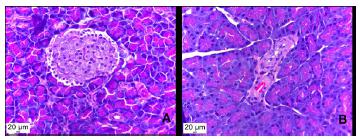Abstract
Purpose:
To evaluate the pulmonary oxidative stress in diabetic rats exposed to hyperoxia for 90 minutes.
Methods:
Forty male Wistar rats were divided into four groups, each one containing 10 animals, according to the oxygen concentration to which they were exposed: 21%, 50%, 75% and 100% (hyperoxia). In each group five animals were randomly induced to diabetes by means of at a dose of 55 mg/kg of streptozotocin (STZ).
Results:
Seventy two hours after diabetes induction, a significant difference was seen in blood glucose in the experimental groups in comparison with the control. In the experimental groups a significant difference was observed in the concentration of malondialdehyde (MDA) in lung tissue and blood plasma (p<0.05), except the 50% group. In the control group, significant differences in the MDA concentration in plasma and lung tissue were also observed (p<0.05), except the 75% group. The MDA concentration in lung tissue in comparison with the diabetic and non-diabetic groups showed a significant difference in the 21% group; however, no difference was seen in the 75 and 100% groups.
Conclusion:
In diabetic animals high oxygen concentrations (75 and 100%) do not appear to exert deleterious effects on lipid peroxidation in lung tissue.
Key words:
Diabetes Mellitus, Experimental; Streptozocin; Oxidative Stress; Lung; Oxygen; Rats




